The Timbuktu region of Northern Mali was once home to a vibrant and diverse music scene. The area gave birth to the “desert blues”—a hybrid of American blues influences and traditional West African musics. Influential figures like guitar legend Ali Farka Touré, the Grammy-winning Tinariwen, and Afropop superstar Salif Keita hail from there. Music is ingrained in the area’s cultural DNA.
But that changed in 2012. On the heels of civil war and what the BBC called “an inconclusive military coup,” Islamists seized control of Northern Mali, imposed sharia law, and outlawed music. “We, the Mujahideen, henceforth forbid the broadcasting of any Western music,” an Islamist rebel declares in They Will Have to Kill Us First, a film about the plight of Mali’s musicians. “We have informed all radio station owners: We do not want Satan’s music.”
“The armed militants sent death threats to local musicians … many were forced into exile,” the New York Times reported in May 2013. “Live music venues were shut down, and militants set fire to guitars and drum kits. The world famous Festival in the Desert (Festival au Désert) was moved to Burkina Faso, and then postponed because of the security risk.”
—Garba Touré
Many musicians (and thousands of others) fled to Bamako, Mali’s capital. Among the exiles were Garba and Oumar Touré. (They aren’t related—“Touré” is the Malian equivalent of “Smith.”) “We had to flee from the North and we went to Bamako,” Oumar says. “That is where we decided to put something together.”
And put something together they did. Their band, Songhoy Blues, is an infectious, groovable, funkified take on desert blues. “People like Ali Farka keep the tradition and stick to one style of playing,” Garba says. “Our generation is a new generation. We added pedals and effects and tried to find something new to get beyond the tradition.”
Garba, Songhoy Blues’ guitarist, started playing about 15 years ago. His father (also named Oumar Touré) played guitar and congas in Ali Farka Touré’s band, and music was a constant presence at home. Garba was drawn to the guitar. “I stole a guitar from my father to start playing,” he says. He is self-taught despite his musical pedigree. “I learned from friends. They showed me how to do different things.”
Songhoy Blues onstage, accompanied by producer/Yeah Yeah Yeahs guitarist Nick Zinner.
Both Garba and bassist Oumar grew up listening to an eclectic stew of Western and local musics. “We were listening to lots of rock and blues in addition to the traditional music coming from Mali,” Garba says. “I was listening to Jimi Hendrix, Ry Cooder, Carlos Santana, B.B. King. Those kind of people.”
“Sometimes we didn’t know what we were listening to,” Oumar adds. “But it felt good, so we listened.”
They started Songhoy Blues soon after arriving in Bamako. “Aliou [Touré], our lead singer, was asked to play a wedding,” Garba says. “He asked us to play with him, and that’s how we started. From that we decided to continue, to develop a repertoire, and to play together more.” But the band wasn’t just for entertainment—they had a message. “We were at a demonstration where people from the North were protesting the occupation. We decided that the best way to protest—to talk about our problem—was through music rather than protesting in the street.”
They performed for other refugees and built a strong local following. “When we started it was at the time of the crisis and there was a curfew,” Garba says of the Bamako scene. “You were not able to go out to listen to music at that time, but it got much better.”
For Songhoy Blues, performance is the most effective form of protest.
In late 2013 Songhoy Blues caught the attention of Marc-Antoine Moreau, who was in Bamako scouting artists for Africa Express—a project Damon Albarn (Blur) created that pairs Western and African musicians. Moreau matched Songhoy Blues with Yeah Yeah Yeahs guitarist Nick Zinner. “I saw them play at a bar in Bamako while we were recording,” Zinner says. “They would play these weekly four-hour sets with no breaks. If the crowd wasn’t engaged by a song within the first 30 seconds, everyone would leave the dance floor. There was this slight built-in pressure of getting people to dance, which is where I think a lot of their groove and intensity comes from as a live band.”
Zinner was also impressed with Garba’s guitar playing. “I was taken by how fluid and fast he could play, all while smiling and looking you directly in the eye,” he says. “It was effortless, but it never seemed like he was showing off, which is my experience with most guitarists who can play fast. It was appropriate to whatever song he was playing, and there was so much joy emanating from him and his playing.”
That initial introduction led to a recording session that produced the song “Soubour,” featured on Maison Des Jeunes, the Africa Express collection of collaborations with Malian artists. “They really liked working with him,” says Moreau (who now manages Songhoy Blues) about the band’s relationship with Zinner. “They brought ideas, arrangements, ideas of sound, and from that they decided to work together again.”
Songhoy Blues toured Europe with Africa Express, recorded their first album, Music in Exile, with Zinner producing, and their music was featured in the film, They Will Have to Kill Us First, which premiered in spring 2015 at SXSW.
Music in Exile has a raw and immediate vibe. It’s reminiscent of the best recordings of blues masters like John Lee Hooker and Muddy Waters, but modernized and infused with African mojo. The band tracked live and overdubbed extra guitars and vocals, though many of the tones were dialed in later. “We were in a nice studio, and we tried to make sure everybody was separate but playing together,” Oumar says. “We didn’t use many amps—in fact, we sometimes took the guitar and bass direct. Afterwards, when we had more time, we reamped the take with the proper amp, in the proper room, and with the proper mic.”
“We recorded all the basic tracks live,” Zinner adds. “That was something that was incredibly important to me, as I didn’t want to change the essence of them at all. Most of the vocals on the record are from those takes as well. On some tracks, I had them strip the songs down to guitars and calabash [a traditional percussion instrument made from a gourd], recorded that performance, and then we built the songs up from there.
Garba Touré’s Gear
Guitars
Yamaha Pacifica
Peerless Tonemaster Custom
Cort acoustics
Amps
Vox AC30
Fender Hot Rod Deluxe
Effects
Boss DS-1 Distortion
Crybaby wah
Oumar Touré’s Gear
Guitars
Fender Squier Jazz Bass
Yamaha basses
Amps
Various Ampeg heads and cabs
Effects
None
Garba pulled off a stellar studio performance. “He is as comfortable playing simple rhythmic parts as he is playing complex runs,” Zinner says. “There were a few times when we would be tracking and I couldn’t understand the pattern he was playing at first. Then he would record the double and play exactly the counterpart to the first pattern, resulting in an interlocked gem that fit perfectly with the song. I found that pretty inspiring.”
Live, the band keeps their gear to a minimum. Partly that’s due to the rigors of touring on a budget, but it’s also what they’re used to—not much is available back home. “In Mali you don’t care much about the mark or the brand or the type,” Garba says. “As long as it works, you use it.”
Garba’s main squeeze is a Yamaha Pacifica, a Strat-style guitar with a humbucker in the bridge position. He also uses a Peerless Tonemaster Custom—a semi-hollowbody with a double-cutaway, two humbuckers, and a Bigsby vibrato. For amps, he favors a Vox AC30 or a Fender Hot Rod Deluxe. His pedalboard—if you can call it that—is simple. His mainstays include a Boss DS-1 for distortion and a Crybaby wah.
Until recently Oumar played a Fender Squier Jazz Bass, though he says he’s switched over to a Yamaha. He prefers Ampeg amps.
Songhoy Blues tracked guitars and basses direct while recording in Bamako, Mali, partly because plugging in amps would blow the power. Their parts were later reamped and rerecorded in Paris.
American blues is indebted to Malian music, though nowadays it’s difficult to tell who influenced whom. “We were in Texas and had the opportunity to listen to music on the radio,” Garba says. “We found this music really similar to the way we play, both in terms of the melody as well as rhythmically. It is clear for us—based on the way we heard the blues played in the U.S.—that the music black people brought to the U.S. through slavery was Malian music. It has become more warped and exploited in the U.S., and it has changed a little bit, but for us it’s basically the same music.”
The primary distinction between American and Malian music is in their different approaches to groove. Western blues-based music places an obvious emphasis on the second and fourth beats of each measure (the backbeats). Malian music—or at least the music made by Songhoy Blues—doesn’t work that way. Although many songs on Music in Exile have a pulse of four or six beats per bar (and some tracks do emphasize the backbeat) the rhythms wind and weave. Accents land in places that are unusual and disorienting to Western ears. “I think that’s one of the most interesting things about the band,” Zinner says. “They are equally inspired by traditional Malian music and Western rock and blues music. There are fundamental differences in those influences and rhythms, and they are able to seamlessly integrate the two.”
Those cultural disparities were apparent when recording as well. “There were a few instances where I would feel the pulse of a song differently from where they were feeling it,” says Zinner. “’Wayei’ is a good example. It did my head in at first because the ‘one’ of that track was actually on the ‘and’ beat—but once I could understand and feel that, it was about adding percussion and rhythmic elements that could accentuate that groove without changing its core or thinking about math.”
According to Garba, the Western approach may be more programmed or analytical, whereas their way is more organic. “The issue is not whether the music is in 4/4 or 6/8 or whatever,” he says. “It is music from our inspiration, coming from our background, and we take it as it is, whatever the rhythm.”
Another distinction is repetition. Repetitive phrases are the basis of the band’s music, including the rhythm guitar parts, bass lines, drum grooves, lyrical content, call-and-response patterns, and even guitar solos. The repetition on Music in Exile creates a deep pocket, trance-like energy, and endless groove.
YouTube It
Witness the “lightning in a bottle” energy of Songhoy Blues in this live performance of three tracks from Music in Exile. Skip to 18:15 to see some of Garbe Touré’s fast-groove fretboard mastery.
Arabic-style melodies and phrasing play a role as well (listen to “Wayei” as an example). “There are many ethnicities in Mali,” says Garba. “Plenty of them from the North are influenced by Arabic music and culture. It’s normal in our music that sometimes we get into that, too.”
Despite differences in feel and approach, music is universal, and it’s the primary tool Songhoy Blues uses to talk about the ongoing crisis in Mali. “The main thing about our music and our message is to protest and talk about what’s not going well in Mali,” Garba says. “Our inspiration comes from our everyday life: our background, our social life, our country. Each time we create something, it is to talk about something.”
The French military has since forced the Islamists from power in Northern Mali, but the area remains unsafe and the Festival au Désert hasn’t returned.




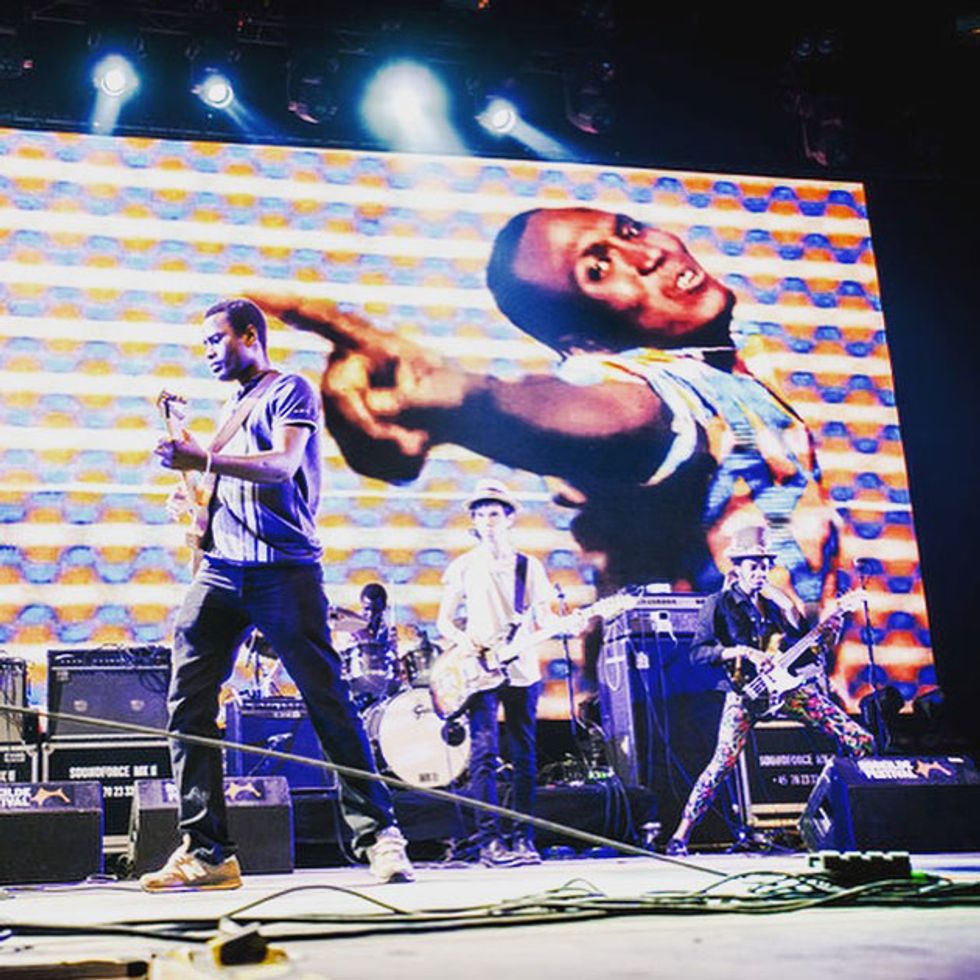

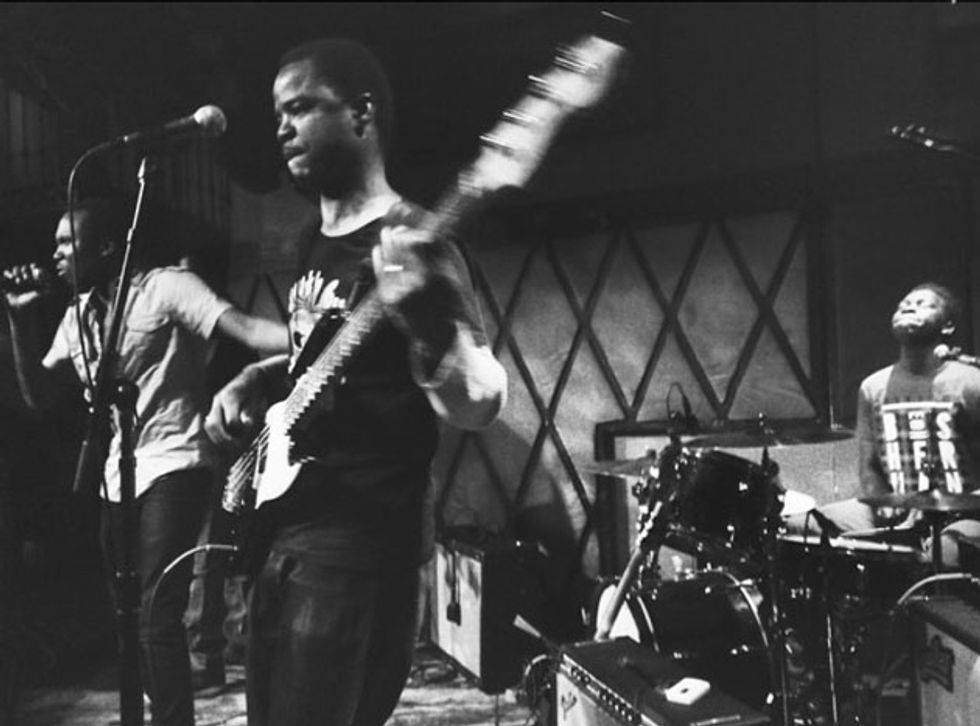





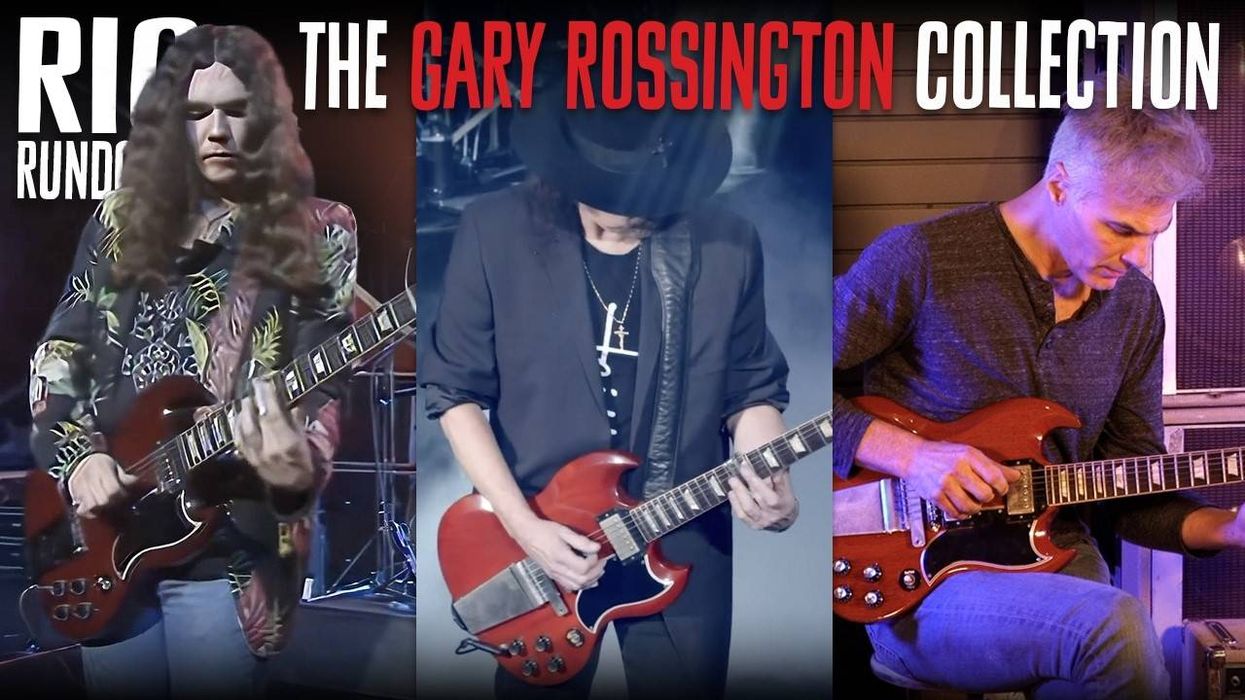
![Rig Rundown: Russian Circles’ Mike Sullivan [2025]](https://www.premierguitar.com/media-library/youtube.jpg?id=62303631&width=1245&height=700&quality=70&coordinates=0%2C0%2C0%2C0)
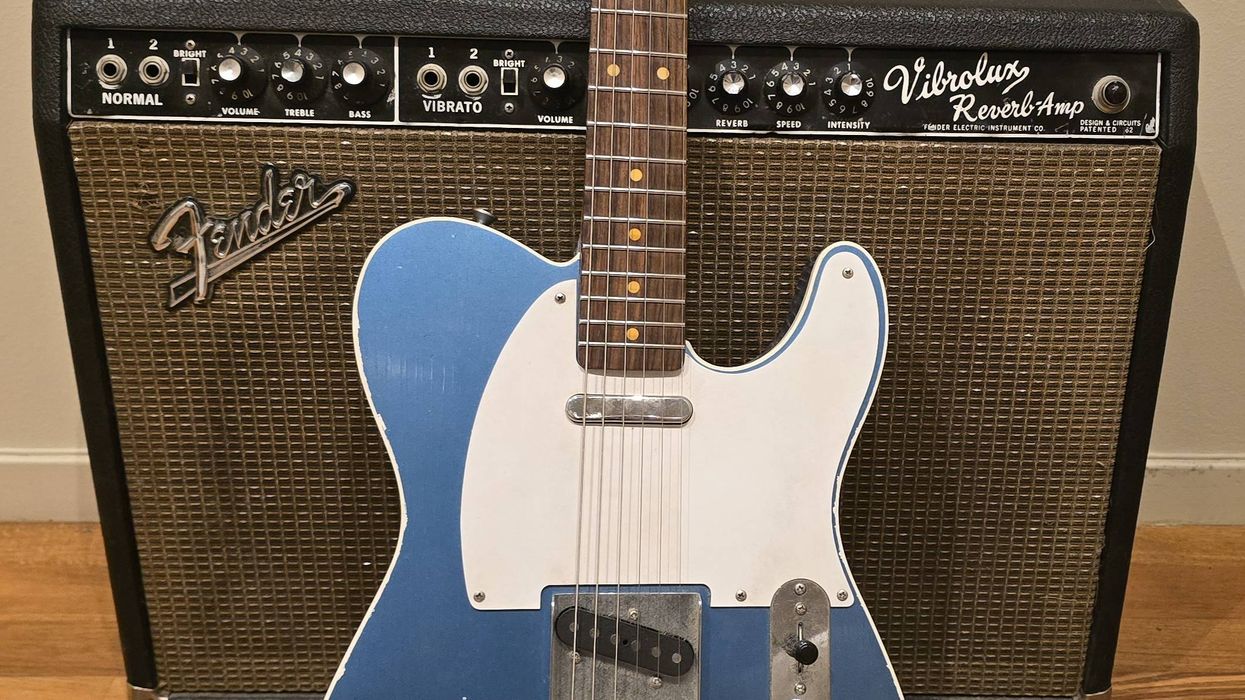


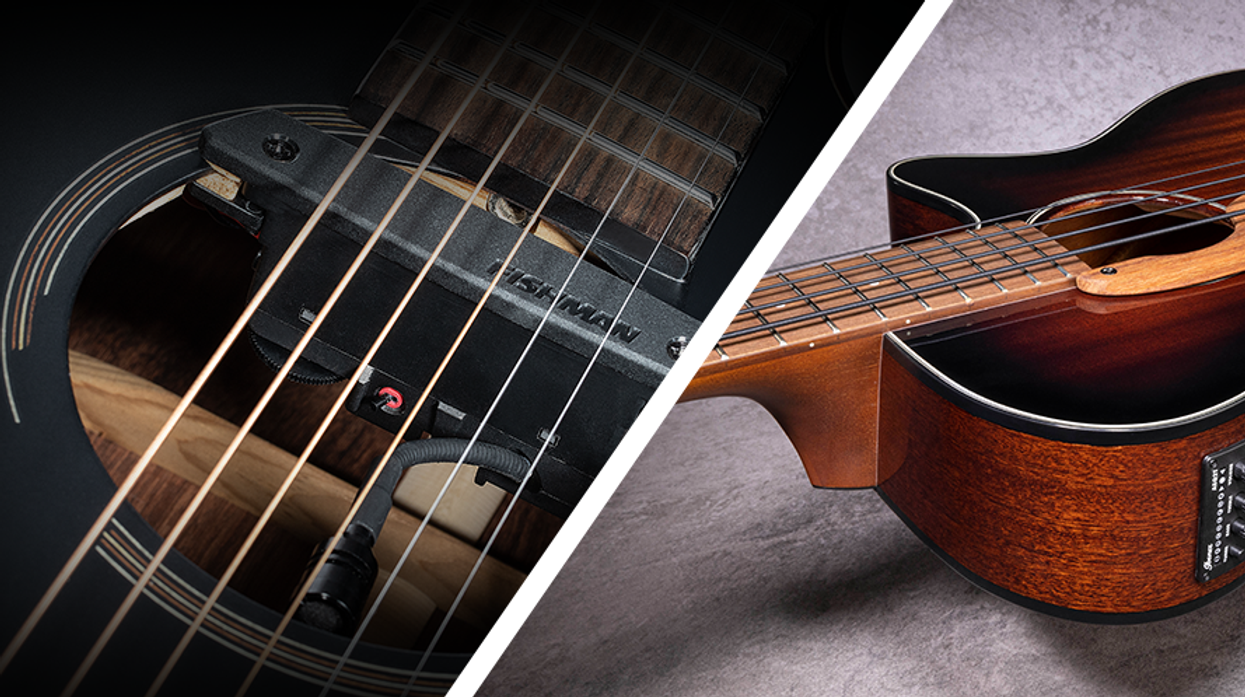










![Rig Rundown: AFI [2025]](https://www.premierguitar.com/media-library/youtube.jpg?id=62064741&width=1245&height=700&quality=70&coordinates=0%2C0%2C0%2C0)




















 Zach loves his Sovtek Mig 60 head, which he plays through a cab he built himself at a pipe-organ shop in Denver. Every glue joint is lined with thin leather for maximum air tightness, and it’s stocked with Celestion G12M Greenback speakers.
Zach loves his Sovtek Mig 60 head, which he plays through a cab he built himself at a pipe-organ shop in Denver. Every glue joint is lined with thin leather for maximum air tightness, and it’s stocked with Celestion G12M Greenback speakers.











